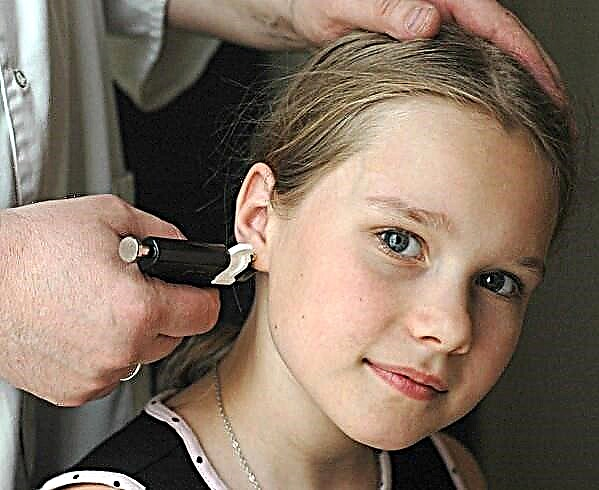The first year of a baby's life is a very important and responsible period. At this time, his body "ripens", the base of his future health continues to form. A lot depends on the actions of the parents, so moms and dads take the main issues very seriously: nutrition and childcare. In both cases, there are a lot of rules and restrictions. Some of them are really justified, others are from the category of superstitions and delusions. Consider what is really impossible for a child under one year old.

Diet prohibitions
Nutritional restrictions become relevant after about 6 months, that is, when the child begins to feed. Parents and grandmothers are always tempted to pamper their baby with sweets, surprise him, give him new products to try and experience new tastes. It is better to limit this impulse, because a child under one year old can not eat everything. To help mothers - a list of foods that should not be given to the baby.
1. Confectionery and "shop" sweets.
This category includes sweets, chocolates, pastries and cakes, sweet baked goods. Sugar is really needed and acceptable in the diet, but confectionery products are dangerous not so much by the presence of sugar as by the fact that they contain harmful confectionery fats, low quality vegetable oils (palm, rapeseed), various artificial additives and dyes. In this sense, it is better for a child to just eat a sugar cube than a candy.
We should also dwell on the use of chocolate. Cocoa is a very allergenic product, therefore it must be excluded from the baby's diet. In addition, chocolate invigorates and can provoke overexcitement.
2. Salt and pickles.
When a baby is just starting to taste "adult" food, it is important that he gets a "pure" taste of food, without any improvers. In addition, salt causes fluid retention in the body and increases the stress on the kidneys and blood vessels.
It is important not only not to add salt to what is on the plate, but also to exclude from the diet all salty foods, for example, salted crackers and straws, not to mention pickles or, even more so, fish.
3. Sausages.
Sausages and sausages should not be on the baby's menu. Even high-quality sausage products contain a lot of harmful additives: dyes, preservatives, taste improvers. In addition, these foods contain so-called "hidden fats".
4. Fatty meats.
Fatty meat is considered pork, lamb, as well as the meat of waterfowl (goose, duck). The fact is that fatty meat is very difficult to digest and creates a great burden on the liver. Given the immaturity of the children's digestive system, eating fatty meat can lead to a breakdown in digestion.
5. Potentially allergenic berries, fruits and vegetables.
Traditionally, allergenic ones include berries, fruits and vegetables with a red pigment: strawberries, red apples, tomatoes, red peppers and others. In addition, citrus fruits and any exotic fruits alien to our climate are considered allergenic.
6. Products that increase gassing.
Some foods provoke increased gas production. Their use is not encouraged, because for the baby "gaziki" is a strong discomfort. These products include legumes, cabbage, grapes, melon.
7. Seafood.
It is impossible to argue with the fact that seafood is very rich in nutrients and protein, but even fish in the complementary feeding scheme is in the last positions, and seafood should be completely absent from the baby's diet. The reason is the high risk of developing an allergic reaction. In particular, we are talking about shrimp, squid, mussels.
8. Mushrooms.
Although mushrooms are called "second meat", they are not useful for a child at all. Mushrooms are a rather heavy food even for an adult; they are difficult to digest and assimilate by the body. In addition, it is known that mushrooms "absorb" various poisons, heavy metals and radiation.
9. Shop spices, sauces, marinades and spices.
The composition of store-bought sauces for dishes, ketchup and mayonnaise completely contradicts the rules of a healthy diet: the basis of these products are dyes, flavorings, and a flavor enhancer. Also, flavor enhancers and a lot of salt contain dry seasonings. You also need to be very careful with spices: some of them irritate the digestive tract (onions, garlic), and some can even cause allergies. If you want to improve the taste of the dish, you can limit yourself to fresh dill or parsley from your garden, without losing your sense of proportion.
10. Carbonated and sugary drinks.
"Soda" is harmful not only for babies, but also for adults, for many reasons. First, it contains carbonic acid, which provides the magic bubbles. Once inside, these bubbles are very irritating to the stomach lining. Secondly, carbonated drinks contain colorings and flavorings. Thirdly, there is usually a lot of sugar in "soda". By the way, for the high sugar content from the menu of a child under one year old, it is better to exclude juices. In addition to sugar, they also contain fruit acids, which are too aggressive for a child's stomach.
11. Whole cow's milk.
Cow's milk protein is foreign to our body, therefore it can cause allergies in a child. In addition, cow's milk is difficult to digest. It is not recommended to use whole cow's milk in the nutrition of children under one year old either as a drink or as a liquid component when cooking cereals or preparing mixtures.
On this topic: cow's milk for a baby (whether or not it can)
12. Chicken egg.
Many people consider the chicken egg to be a very nutritious and healthy product. This is true, but for a child under one year old, eggs are a dubious food. Chicken protein is a strong allergen, and the yolk contains a lot of fat, therefore it is useful only in very small doses.
13. Gluten-containing porridge.
Gluten is a vegetable protein found in almost all grains. It is considered very allergenic, so it is better not to give gluten-containing cereals to children under one year old. These include almost everything except corn, buckwheat and rice. Semolina is especially undesirable in baby food. Our mothers and grandmothers love to talk about the 5% porridge that the baby should suck from the bottle, but in fact, semolina porridge, firstly, contains a lot of gluten, and secondly, it is very poor in composition and does not contain many necessary for growth and development of substances.
On this topic: food allergy in a child
Superstitious prohibitions
 Why it is impossible to give a child this or that product is clear to any competent mother. However, in addition to explainable prohibitions on food, there are prohibitions that are firmly entrenched in the minds of people, but it is very difficult to explain them. These prohibitions are from the realm of superstition, they are familiar to many from childhood, and, having become parents, people continue to follow them.
Why it is impossible to give a child this or that product is clear to any competent mother. However, in addition to explainable prohibitions on food, there are prohibitions that are firmly entrenched in the minds of people, but it is very difficult to explain them. These prohibitions are from the realm of superstition, they are familiar to many from childhood, and, having become parents, people continue to follow them.
- You can't cut your hair for up to a year. In many cultures, a child is not even given a name under one year old. This is due to the fact that in ancient times, infant mortality was very high and many simply did not live up to a year. Perhaps that is why the belief arose that it is not worth cutting such a baby - he is not yet a full member of the family;
- You can not kiss the heels of the baby - he will start walking late. From the same series there is a superstition that you cannot kiss a child on the lips - he will speak late. Most likely, these prohibitions arose out of hygiene reasons. Kiss calmly, there is no connection between kissing and walking;
- It is impossible for the baby to look in the mirror. According to superstition, in the mirror, a child can see the other world, his past lives and may be frightened. There are also such explanations: the child will overlook his happiness, may become fearful, may not start talking for a long time, teeth will cut through poorly, may cause frequent illnesses, may become a stutter, promote squint, the child's soul will go into the looking glass, the negative accumulated in the mirror may pass into the child's soul, and etc. In fact, kids love to look at themselves very much, and the prohibition was most likely due to the fact that in ancient times mirrors were a luxury item, and a child could break it through negligence. Psychologists believe that looking in the mirror is even useful for a child, because it contributes to the development of the child's psyche and personality. Already from the age of 4 months, the baby begins to understand that other objects and people can be displayed in the mirror, from the year the child begins to understand that he himself is displayed in the mirror. If the child experiences negative emotions at the sight of himself in the mirror, then this is a reason for contacting specialists for the possible exclusion of mental abnormalities;
- You can't look at a sleeping baby - it will grow up fearful. This is only partly superstition, and partly a very real pattern. Suddenly waking up, the baby may be frightened when he sees an adult;
- You can't put a child on the table - there will be a lot of crying in life. In this superstition, you can also see a certain pattern: sitting on the table is dangerous for the baby. Having fallen, he will indeed cry a lot, just this meaning may have faded over time;
- You can't blow the baby in the face - fate will get confused. Our ancestors once again tried not to touch the child's face. They believed that this would not lead to good.
You don't need to blindly follow all of these prohibitions, but you really should be careful. True, it is better to do this for reasons of common sense, and not out of superstitious fears.



